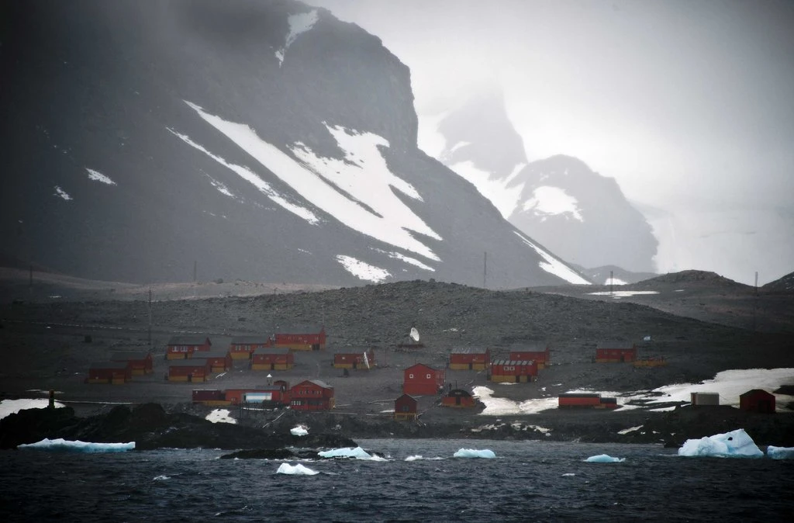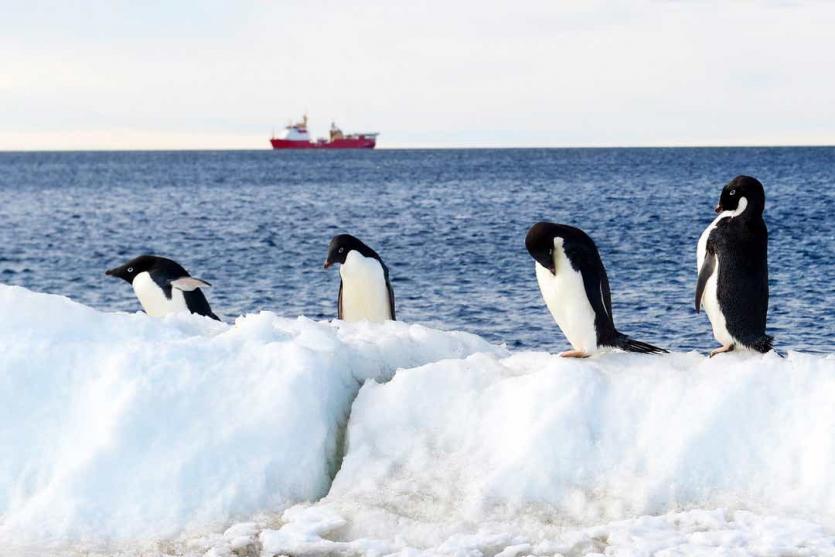A line of penguins stand on Inexpressible Island, as the HMS Protector (background) is seen patrolling the area, in Terra Nova Bay, Victoria Land, Antarctica.
Photo:EPA
 FEBRUARY 14th 2020
FEBRUARY 14th 2020
By Patryk Krych | The World Daily
Temperatures in Antarctica logged Record Heights Unseen before in Human History
Recent heat logs of the Antarctic reveal that its temperatures have reached heights unseen before in the history of its human monitoring. With such a drastic development, there are speculations as to what this could mean for the ecosystems going forward.
Over the course of the past 50 years, the temperatures in the Antarctic Peninsula have risen by at least 3C, according to the UN's World Meteorological Organization (WMO). A number that may seem low overall, but could mean a significant difference to an area’s entire climate and ecosystem. It was further added that during that time, at least 87% of the Antarctic glaciers have made a “retreat” of sorts, which was shown to have “accelerated” in the past 12 years.
With its recently achieved record high temperature of 20.75C, many are considering it as added weight atop the piling evidence supporting the issue of climate change and is considered by many as a further call to action. However, Scientist Carlos Schaefer, who works for Terrantar - a Brazilian government project in charge of monitoring the impacts of climate change on permafrost and biology at 23 of the Antarctic sites, said that the logged temperature "has no meaning in terms of a climate-change trend."
Antarctica’s previous record high temperature of 19.8C, logged in January of 1982, had remained fluctuating but unconquered for 38 years. Similarities have been drawn to the Arctic region, which had reached a record high temperature of 21C back in July of 2019. Conclusions over the world’s frozen regions becoming heated have become difficult to argue, and the threat of melting glaciers causing a rise in sea levels has become a largely popular concern once again.
Mr Schaefer told AFP that they had "never seen a temperature this high in Antarctica", but has also clarified that the reading was not part of long-term data and has yet to be fully evaluated after having been logged. As such, he says that the data, while potentially devastating, should not be used to predict a trend just yet until it’s assessed. "We can't use this to anticipate climatic changes in the future. It's a data point. It's simply a signal that something different is happening in that area."
The last month had also proven to be the continent’s hottest January on record as well, so while there are uncertainties over the data thus far, certain developments can still be observed to the Antarctic’s climate overall.
“We are seeing the warming trend in many of the sites we are monitoring,” Mr Schaefer added “but we have never seen anything like this.”
Shifts in the ocean currents seem to be a part of the primary cause of the warming, said the scientists on the Brazilian Antarctic programme, also including El Niño events as a potential part of the cause. “We have climatic changes in the atmosphere, which is closely related to changes in permafrost and the ocean. The whole thing is very interrelated.”
The quickened melting of the glaciers -heightened in recent years- is also thought to be part of the reason for the decline in the population of chinstrap penguin colonies. A species that’s come to depend quite severely on the presence of the sea ice. How, and whether other ecosystems are to be affected by the melting glaciers has yet to be fully assessed.

Antarctica barely recognizable as rising temperatures continue to shrink the ice. Photo: New York Times
By Patryk Krych | The World Daily






